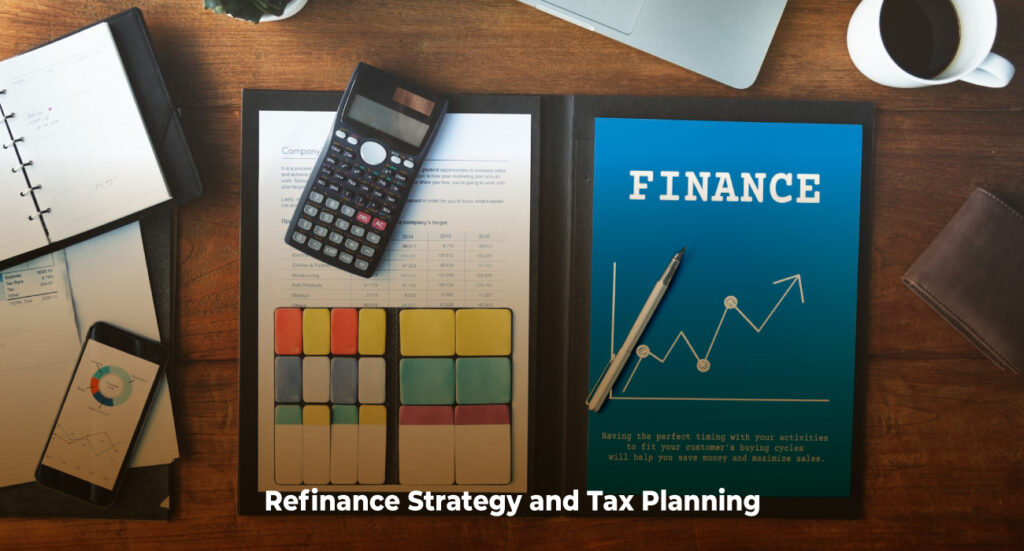All You Need to Know About Refinancing and Tax
In early 2025, the Reserve Bank of Australia (RBA) made its first interest rate cut after years of record-high rates—offering much-needed relief to investors and borrowers. With the potential for further rate cuts across the next three quarters, many Australians are now exploring refinancing options to secure a better deal from their lender.
Refinancing a property can be a smart financial strategy, especially when interest rates shift, equity grows, or your investment goals evolve. While most borrowers focus on lowering repayments or unlocking equity, the tax implications of refinancing are often overlooked. At Investax, we frequently see clients refinance without seeking proper accounting advice—only to miss out on valuable opportunities or, worse, compromise the deductibility of their loans.
In this article, we’ll break down everything you need to know about refinancing—and how it could impact your tax position.

1. What Is Property Refinancing?
Refinancing involves replacing your existing mortgage with a new one—either with your current lender or a different bank. The main reasons people refinance include:
- Securing a lower interest rate
- Accessing equity to renovate, invest, or consolidate debt
- Switching from variable to fixed rates (or vice versa)
- Restructuring loans for better cash flow or investment purposes

2. When Does Refinancing Make Sense?
It may be time to consider refinancing if:
- Your current interest rate is significantly higher than market rates
- Your loan structure doesn’t support your property investment strategy
- You want to free up equity for another purchase or renovation
- You’re paying unnecessary fees or lack offset/redraw flexibility

3. The Tax Implications of Refinancing an Investment Property
Here’s where things get technical—but essential.
a. Deductibility of Interest
Interest on the new loan is only deductible to the extent it relates to income-producing purposes. If you refinance and use the equity to buy another investment property—great, the interest is deductible.
However, if you access equity and use it for personal reasons (e.g. a holiday or buying a car), that portion of the interest is not deductible.
b. Loan Splits for Clarity
Creating separate loan splits when refinancing is a smart move. This way, you can easily track which portions are for investment versus personal use, making tax reporting much clearer.
When refinancing an investment loan, it’s crucial to replicate the existing loan structure as closely as possible—ideally on a dollar-for-dollar basis. This means the new loan amount should match the remaining balance of the original investment loan, without adding any personal borrowings or top-ups for non-investment purposes. Doing so provides a clear paper trail that both your accountant and the ATO can follow, demonstrating that the funds continue to be used for income-producing purposes. This approach helps preserve the deductibility of the interest and avoids unnecessary scrutiny from the ATO.
c. Borrowing Costs
When refinancing, you may incur borrowing costs such as:
- Loan application fees
- Mortgage registration fees
- Discharge fees from the old lender
- Lenders Mortgage Insurance (if you borrow more than 80%)
These costs are usually deductible over five years or the life of the loan—whichever is shorter—provided the loan is for an investment property and the funds are used to acquire an income-producing asset.
d. Break Costs and Early Exit Fees
If you’re breaking a fixed loan early to refinance, you might be hit with break costs. The ATO may allow a deduction if the refinance is for income-producing purposes.

4. What About Refinancing Your Home (PPOR)?
If you’re refinancing your principal place of residence (PPOR) and taking out additional funds to invest—such as purchasing a rental property—the new portion of the loan used for the investment can be tax deductible. It’s important to understand that while the original loan on your PPOR is not deductible (since it was used for private purposes), the equity loan drawn for income-producing use may qualify for interest deductions.
As mentioned earlier, the best practice is to split the loan at the time of refinancing. This means creating a separate loan account for the investment portion. Doing so ensures a clear distinction between personal and investment borrowings, making it easier for both your accountant and the ATO to assess deductibility. Keeping these purposes separate not only simplifies tax reporting but also protects your ability to claim deductions correctly in the future.

5. Refinance Strategy and Tax Planning
Refinancing isn’t just about getting a better interest rate—it can also be a powerful tax strategy when structured correctly. One of the key benefits of refinancing is that it allows you to create a clear loan trail that both the ATO and your accountant can easily track. This clarity is crucial when it comes to preserving or enhancing tax deductibility.
Imagine this: you initially used your PPOR (principal place of residence) to fund the purchase of an investment property. Over time, your investment property has grown in value and now has enough equity to repay the portion of the loan originally secured against your PPOR. By refinancing and moving the entire investment-related loan to the investment property itself, you clean up the loan structure and create a stronger case for deductibility.
As a result, your PPOR now has available equity, which you can tap into for a new investment property or to fund a business venture. As long as the new borrowed funds are used for income-producing purposes—whether it’s generating passive income through property investment or active income through business operations—the interest on that loan may be tax deductible.
A refinance can be a valuable tax planning strategy when done with professional guidance. Strategic opportunities include:
- Debt recycling – converting non-deductible home loan debt into deductible investment or business debt
- Accessing equity – to expand your property portfolio or grow your business
- Loan structuring – optimising within trusts or other entities for asset protection and tax planning
At Investax, we regularly help clients restructure their loans through refinancing to improve both their cash flow and tax position. We ensure the structure complies with ATO guidelines while aligning with each client’s long-term wealth-building goals.

6. Common Mistakes to Avoid
- Mixing personal and investment borrowings
- Not splitting loans when refinancing
- Claiming interest deductions for private use of borrowed funds due to the mix up
- Not getting professional tax advice before refinancing
- Not keeping a copy of your previous loan’s year-end statement (30/06)
- Not keeping a copy of your previous loan’s closing statement
Conclusion: Refinancing Is More Than Just Interest Rates
Refinancing can save you money, unlock equity, and supercharge your investment strategy—but tax implications must be considered. The ATO closely examines how borrowed funds are used, so documentation and structure are key.
Thinking of refinancing your property? Whether it’s for tax deductions, investment growth, or loan restructuring, the right advice can make all the difference. At Investax, our tax specialists can help you make the most of your refinance—without risking costly tax mistakes.
General Advice Warning
The material on this page and on this website has been prepared for general information purposes only and not as specific advice to any particular person. Any advice contained on this page and on this website is General Advice and does not take into account any person’s particular investment objectives, financial situation and particular needs.
Before making an investment decision based on this advice you should consider, with or without the assistance of a securities adviser, whether it is appropriate to your particular investment needs, objectives and financial circumstances. In addition, the examples provided on this page and on this website are for illustrative purposes only.Although every effort has been made to verify the accuracy of the information contained on this page and on our website, Investax Group, its officers, representatives, employees and agents disclaim all liability [except for any liability which by law cannot be excluded), for any error, inaccuracy in, or omission from the information contained in this website or any loss or damage suffered by any person directly or indirectly through relying on this information.





